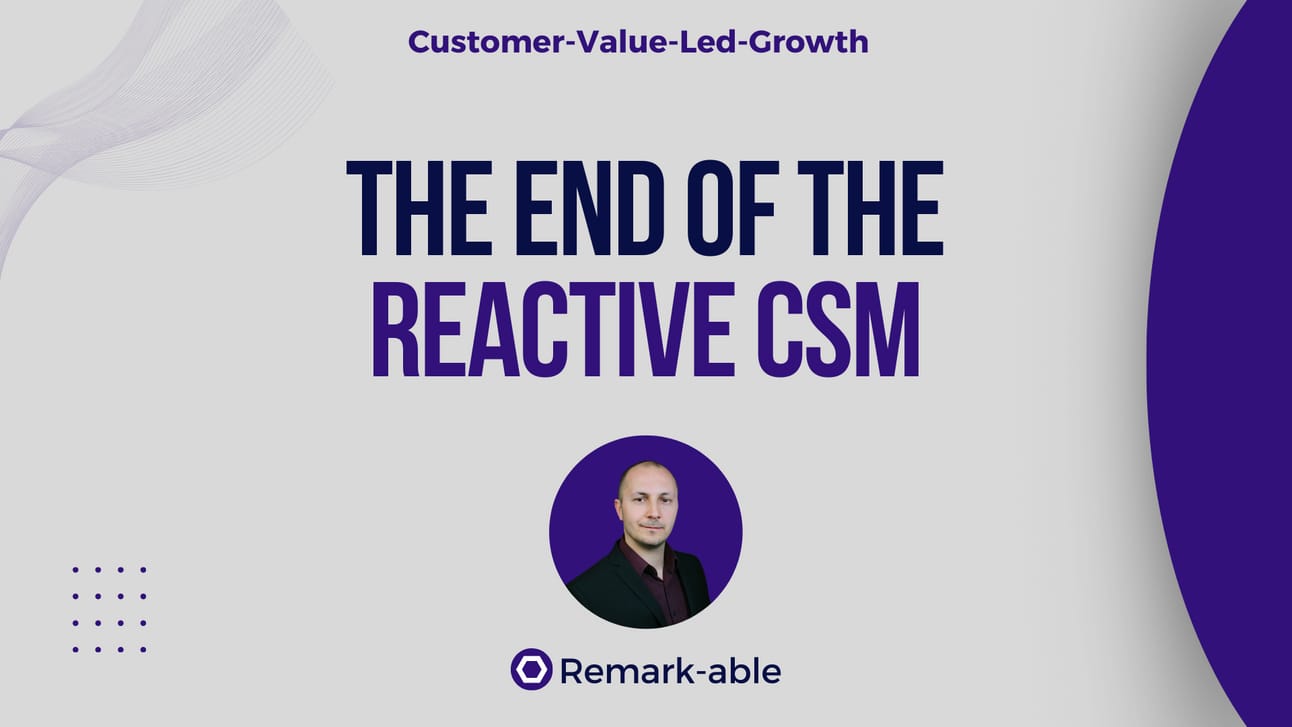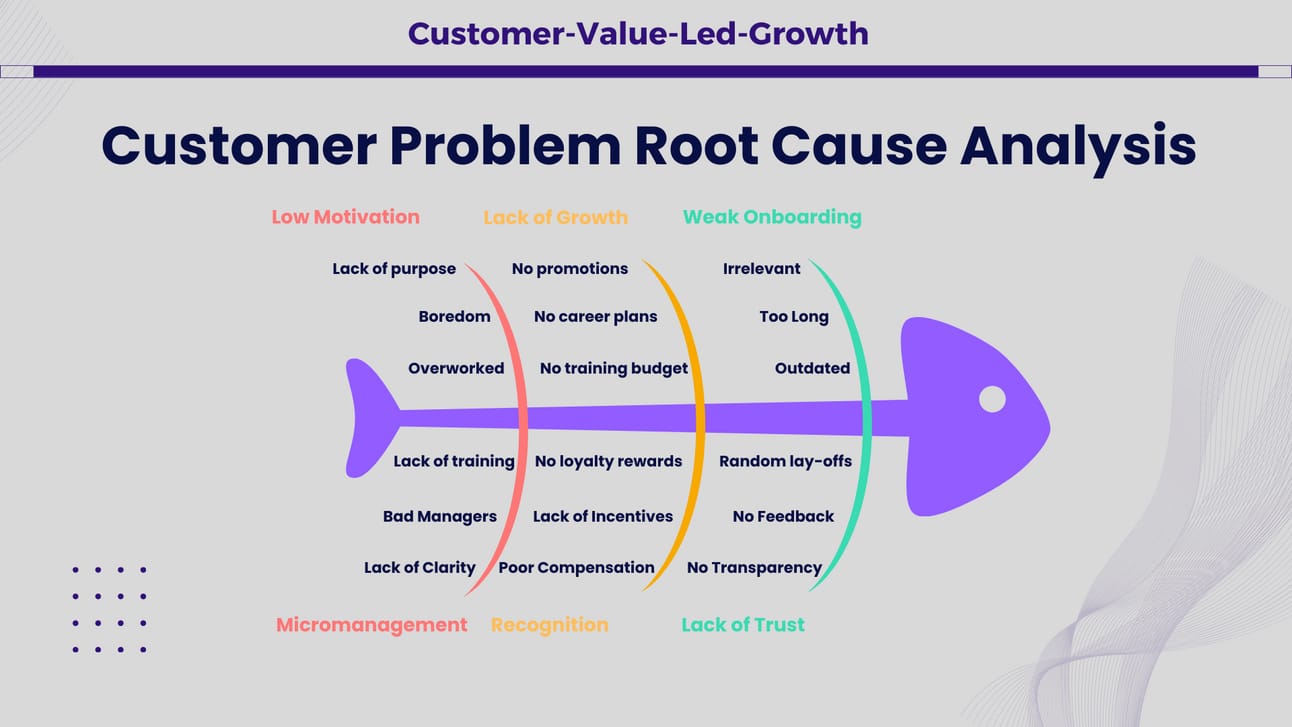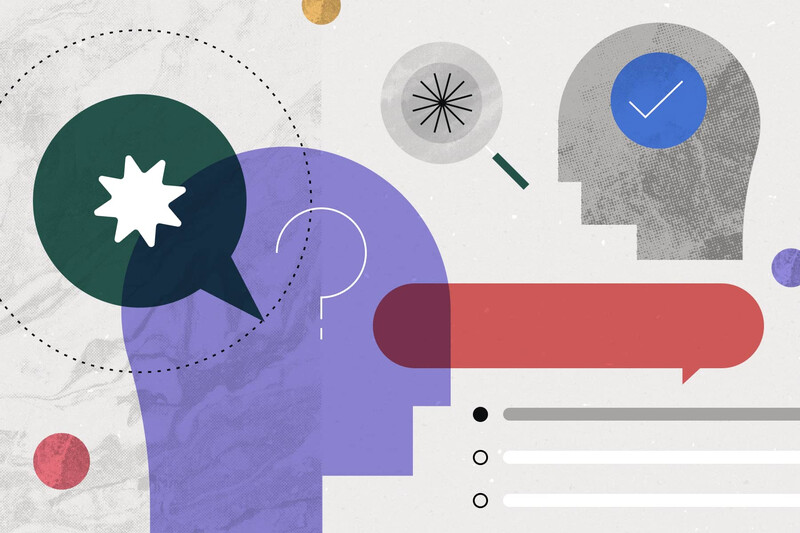
Hi, Markus here. Welcome to a new episode of the Customer-Value-Led-Growth Newsletter.
I share strategies and guides to help you become a proactive CSM delivering more value for your customers and revenue for your company every week.
Need additional help? Check out these resources 👇
If you are an active reader on LinkedIn, you might have seen statements like this 👇
“AI is not going to replace CSMs. CSMs with AI are replacing CSMs without.”
That does not sound too bad. All you have to do is to jump on the AI bandwagon. The only problem is that this is not true - AI is going to replace reactive CSM work.
Because it can put out fires faster and cheaper. Plus it’s relatively easy to train the AI for it as there are limited options (not saying the quality will be high though).
Now that may sound like a relief - finally, you don’t have to spend your time firefighting, quick-fixing, and band-aiding.
But here’s the important question: Do you have the ability to do the proactive and strategic work that lies beyond the AI’s capability?
In today’s post, I want to talk about 3 skills you need to master to stay relevant in the AI era.
1. Active Listening
I’m still amazed (and not in a good way) by how much CSMs do most of the talking in their customer conversations. You ain’t going to impress your customers with all your knowledge and wisdom.
You are driving them away because you are signaling that you don’t care about what they have to say. No surprise if they become non-responsive and reluctant to meet.
Your customers want to feel heard. Think of yourself as being the therapist for their business problems. This is the nature of the customer-CSM relationship. Active listening builds trust with your customers instantly.
Trust opens many doors that would otherwise remain closed. Here’s a great overview about active listening 👇
Customer Discovery
This is the most important use case for your active listening skills. Understanding your customers’ needs is an irreplaceable element for successful Customer Success Management. Your customers’ needs are defined by
the goals they want to accomplish
the problems they need to solve
the skills and knowledge customers possess
A lot of CSMs misunderstand the role of the sales hand-off. It’s a summary of basic information. Its purpose is to evaluate whether there’s a customer-product fit. It can certainly contain an accurate definition of what the customer goals are and how they measure success.
But are your sales reps qualified to run an in-depth problem analysis? To evaluate your customers’ abilities to determine the gaps and their needs for training and education? Most of the time the answer is no.
Active listening becomes exponentially more important if your customers don’t know what they want to accomplish. If you want to come up with qualified suggestions, you need to get the full picture.
2. Problem-solving
AI can solve trivial problems exceptionally well. Problems that are common, clearly defined and therefore have a manageable number of (standardized) solutions. But not all problems are trivial.
The complexity of a problem increases with
the size of your customers’ companies (enterprise)
the complexity of the subject
the complexity of your product
It makes a hell of a difference whether you are helping
solopreneurs create and distribute content on social media or
Fortune 1000 companies manage a portfolio with 1000s of products
This is where you can really shine. Where you can go from vendor employee to trusted advisor. The cornerstone of your ability to solve complex, and therefore valuable, customer problems is to understand them better than even your customers do.

Becoming familiar with basic frameworks is great for starters. Here’s an overview about the tools you can use to your advantage 👇
3. Transferring knowledge
I feel like this is getting lost quite often in the everyday life of the CSM. Your goal is to help your customers to accomplish their goals. The goals they have now and the goals that come after.
The true of a CSM lies within education and training. It’s to help them build the skills and knowledge they need to solve their problems. Put simply - customer enablement.
So that at some point in the future, they can grow the value they get from your product without your help. It’s like a parent teaching their kid how to ride their bike or how to swim.
Effectively transferring knowledge - writing, talking, visualizing - is not easy. If you have a background as a teacher or educator, you have a powerful competitive advantage. However, the key to excel is to constantly seek customer feedback.
You need to measure the quality of your content and services by the number of successful implementations. You need to understand what works, what does not, and why. To clarify, double down or close gaps until all major inputs constantly perform on a high level.
Too many CSMs try to build as many skills as possible. From writing code to graphic design. In the end, they never need most of these skills while being average in the ones that matter.
Focus on excelling in active listening, problem-solving, and transferring knowledge, you’ll see an exceptional return on your efforts.
Here’s how I can be of further help 👇
Training Platform: Become 1% better at delivering, growing, and monetizing customer value every day.
Coaching: Upskill faster and further with weekly coaching calls in a group-, leadership- or team setup.
Courses and Guides: Get the strategies, tools, and processes to move from reactive CSM to Customer Value-Led Growth.
Sponsorships: Promote your product, service, content, or event to 8k+ CS professionals in my newsletter or 48.8k+ on LinkedIn.


